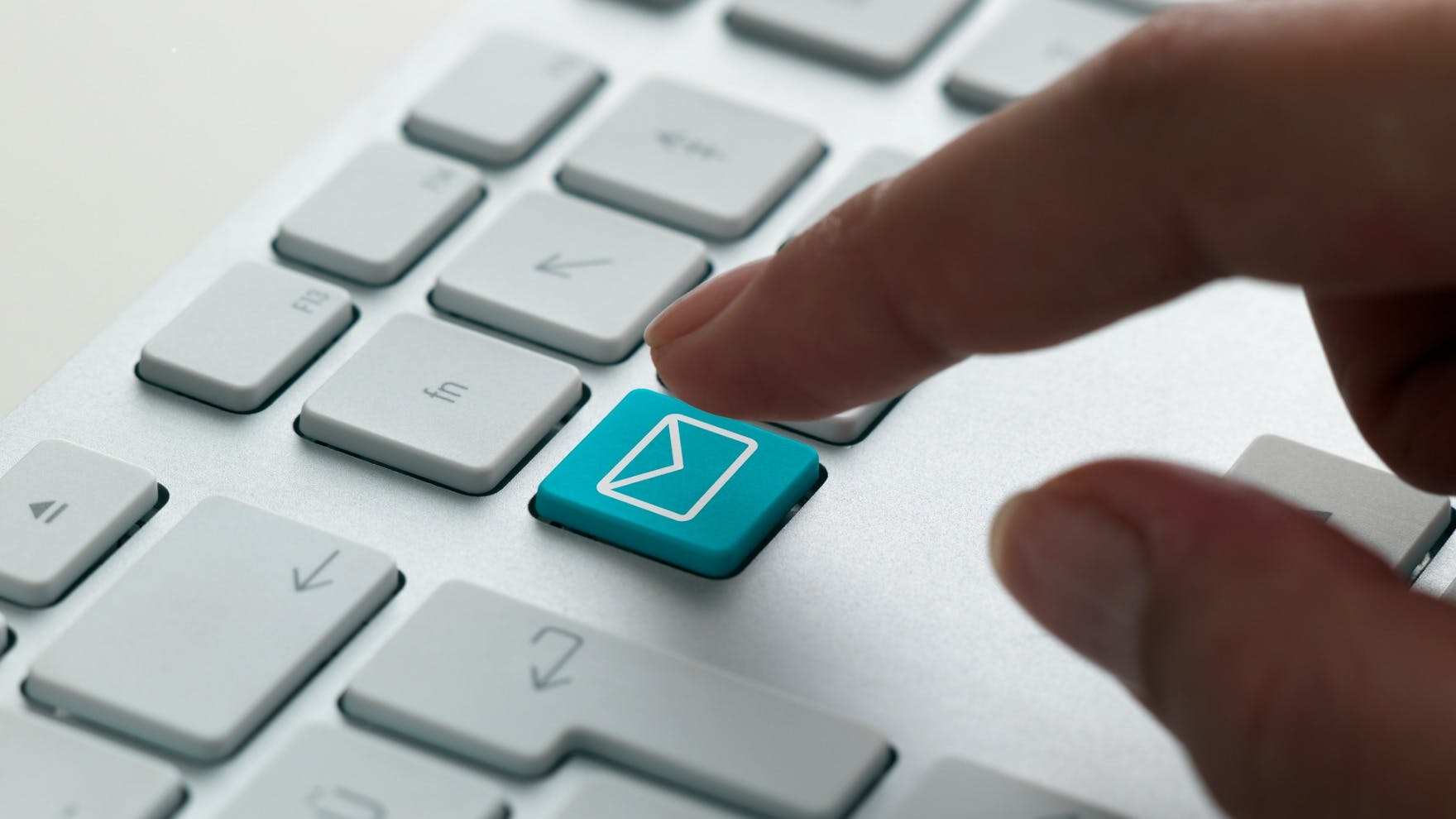11 Professional Email Etiquette Rules for 2022
Jenny Keohane
With the average professional sending 40 emails per day and receiving 121 — it’s inevitable to move fast in your email communication, but are you overlooking fundamental email etiquette rules?
Mastering your email etiquette will decrease the likelihood of your email getting lost in the clutter and increase the likelihood of getting a response.
From formatting to subject lines to reply all/bcc, we’ll cover all necessary email etiquette rules for professionals in 2022.
Here’s what we’ll cover:
- What Is Email Etiquette & Why Is It Important
- Email Etiquette Rules for Email Format
- General Email Etiquette Rules
What Is Email Etiquette & Why Is It Important
Email etiquette refers to the principles you should follow when sending emails such as language, structure, and formality.
In professional business emails, this is critical. By perfecting your email etiquette, you demonstrate professionalism and build credibility.
Especially in sales, if you mess up in your initial email outreach, your chances of getting a response are significantly lowered. Poor email etiquette gives recipients a bad first impression, which is a huge lost opportunity for sales reps.
Since your recipient can’t talk to you face-to-face, the words in your email will affect their perception of you.
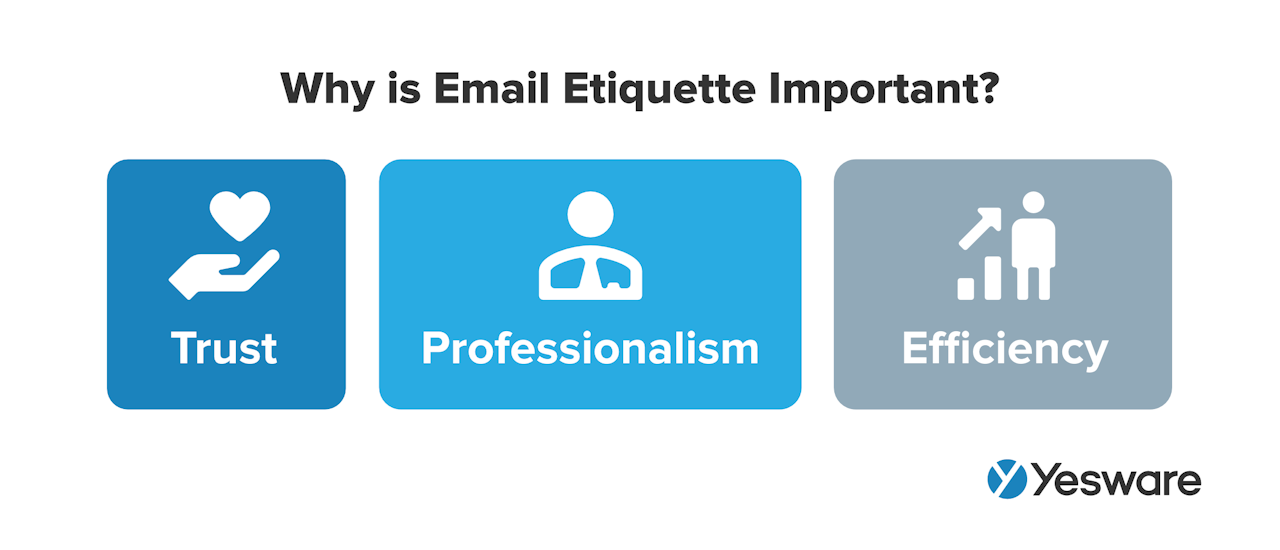
Before getting into more in-depth overlooked email etiquette rules, make sure to nail down the general rules of professional emailing:
- Use classic fonts and standard colors and sizes
- Use proper punctuation
- Double-check your grammar
- Avoid abbreviations
- Resist emojis or emoticons
- Email from your work email address
Now, here are some of our top tips for perfecting your email etiquette in 2022.
Email Etiquette Rules for Email Format
1. Write a Clear and Concise Subject Line
Before we get into the body of your email, it’s important to get your subject line right. Because let’s face it, your subject line determines whether your message gets opened or not in the first place.
A key email etiquette rule is to keep the subject line clear, concise, and correctly indicate the context of the message.
In an email template study, we found that the most successful emails had subject lines between 1-5 words.
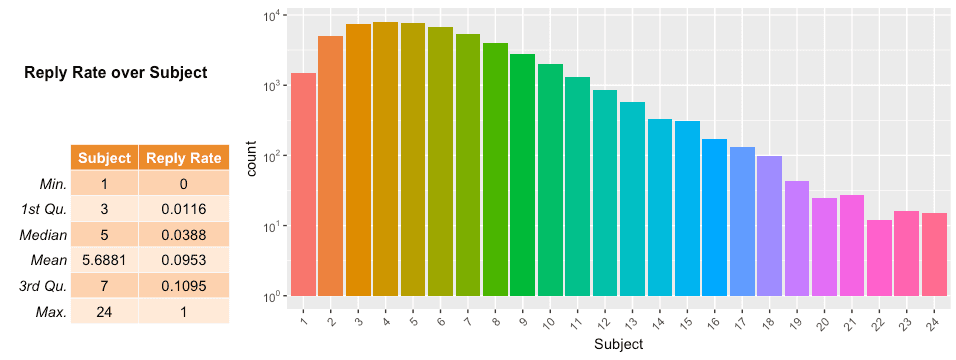
This shows that concise subject lines are not only good for email etiquette but also increase the chances of getting an open and reply.
Also, always keep mobile users in mind and never exceed 50 characters or 7 words in your subject line. This will ensure that recipients can view the full subject line in their inbox.
Tip: Here are 20 cold email subject lines proven to get over 85% open rates.
2. Use Professional Salutations
Use “Hello” and “Hi” rather than “Hey” in professional emails. That way, you avoid all instances of coming off as non-professional or too casual to your recipient.
Grammarly suggests the 6 best ways to start an email are:
- Hi [Name],
- Dear [Name],
- Greetings,
- Hi there,
- Hello, or Hello [Name],
- Hi everyone,
Your email greeting is your recipient’s first impression of you — so play it safe. The last thing you want is them clicking away before getting to the content of your message.
3. Introduce Yourself
When sending an email to a stranger, it’s necessary to introduce yourself.
Your introduction should state who you are and why you’re reaching out. Never leave the recipient hanging by getting right into the ask of the email — you’ll immediately diminish your credibility and professionalism.
Once you introduce yourself, then you can get into your ask. But your ask will fall flat without a proper introduction.
Tip: You can make your introduction stand out by mentioning a mutual connection to build rapport and establish a connection from the get-go.
4. Choose The Right Sign-Off
Next, how to end an email. Your sign-off is the last impression you give, so you want to end your email on a high note.
Common sign-offs include:
- Best,
- Best Regards,
- Sincerely,
- Thank you,
- Regards,
To level up your email and make it even more personable, tailor your sign-off to align with the context of your message. Let’s look at some examples.
Sign-offs for when you’re requesting a meeting:
- Looking forward to meeting with you,
- Eager to work around your schedule,
- Thanks in advance for your time,
Sign-offs for when you need feedback or a task completed:
- I sincerely appreciate your help,
- Looking forward to your reply,
- Thank you and let me know if there are any hold-ups,
Sign-offs for when you’re prepping for a planned meeting:
- Talk soon,
- Speak with you soon,
- Look forward to connecting soon,
5. Use a Professional Email Signature
Professional email signatures consist of the following: full name, company name, contact information (phone number, email address), and any social networks or websites.
Here’s an example of a professional email signature that is clear, concise, and valuable:

Tip: Recipients are much more likely to remember you if you include an image in your signature.
It also helps to humanize the message by allowing the recipient to put a face to the name and message on their screen.
Professional Email Etiquette Rules (Grammar, Tonality, Reply All)
6. Use an Out-of-Office Reply When on Vacation
When you plan to be away from your email for an extended period of time, i.e. longer than a couple of days, it’s important to use an out-of-office automatic reply.
That way, your recipient knows you’re not giving them the cold shoulder. It’ll also help direct them to another contact in your absence.
A generic out-of-office message goes something like this:
[Your Greeting]
I will be out of the office from [Starting date] until [End date].
If you need immediate assistance during my absence, please contact [Contact Name] at [Contact’s Email Address]. Otherwise, I will respond to your email as soon as possible upon my return.
Best Regards,
[Your Name]
But if you want an out-of-the-box message, we created some unique and entertaining examples to copy and use here.
7. Use Precautions When Sending Attachments
When sending an attachment, there are a few precautions you should follow.
Avoid sending large files that will take up space in your recipient’s inbox. If need be, make sure to compress them into a ZIP file. Another very useful way of sending large files through email is attaching them as a Google Drive link.
Make sure to send universal file types such as PDF and JPG. Sending a non-recognizable file type will only lead to problems for your recipient.
Another email etiquette rule to follow when sending an attachment is to mention that you’re sending one or even ask for permission before doing so.
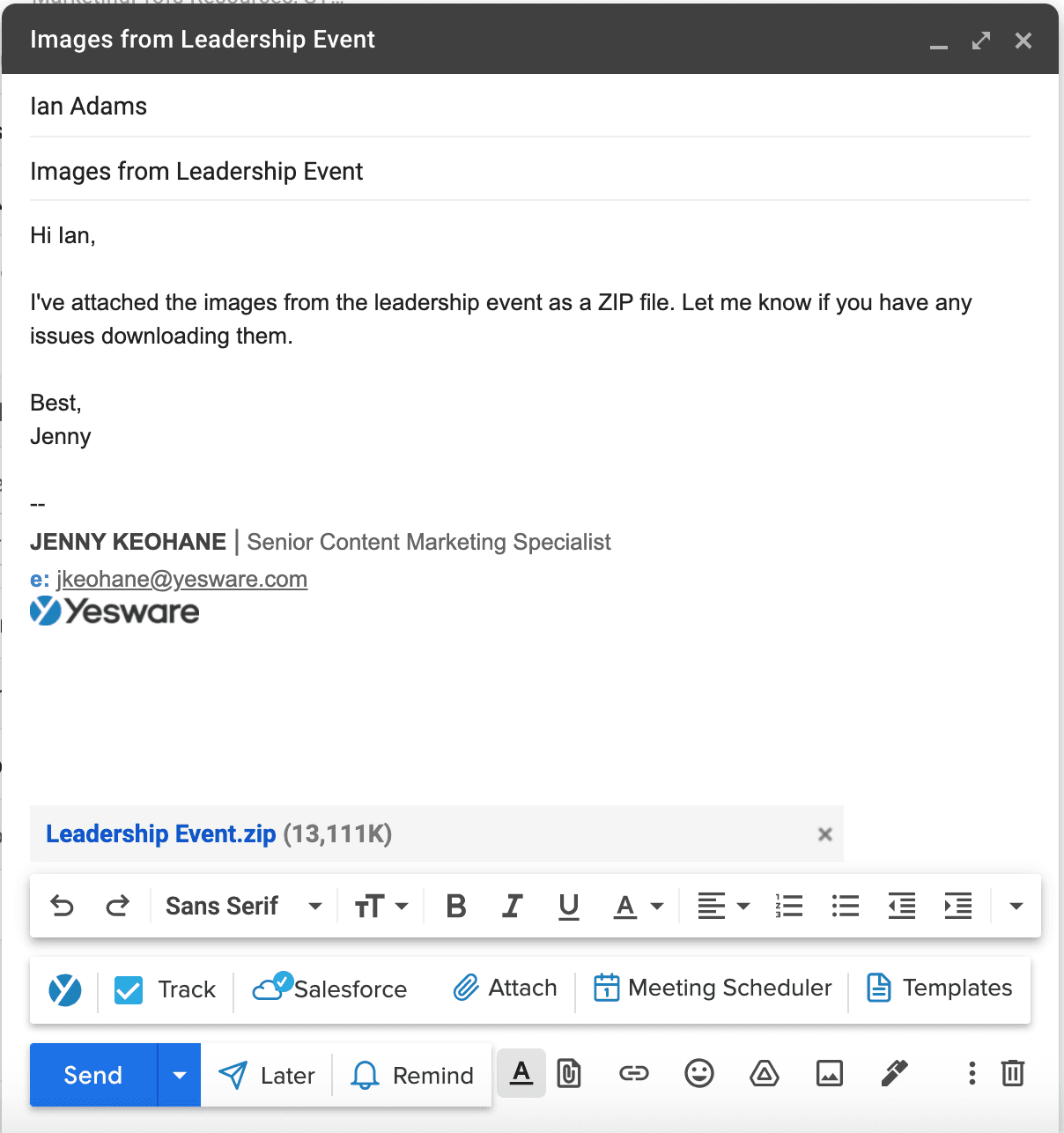
A rule behind avoiding viruses and malware is never to open attachments that you’re not expecting. Clarify what you’re sending by mentioning the name and/or file type in your email so that you avoid any possible hesitation.
8. Use Reply, Reply-All, CC, and BCC Etiquette
A common misconception in professional emailing is the use of Reply vs. Reply-all and CC vs. BCC. In professional email exchanges, it’s important to know when to use each of these.
Reply vs. Reply-all:
Use Reply when you only want to respond to one person in an email thread, and use Reply-all when you want to respond to all emails on the thread.
Refrain from using Reply-all unless it is completely necessary. This not only adds unnecessary clutter to the other recipients’ inboxes, but it isn’t proper email etiquette to respond to one person and send that message to everyone.
A helpful tip to remember: use Reply-all if your response impacts at least 50% of people in the message thread.
CC (carbon copy) vs. BCC (blind carbon copy):
When you CC someone, those emails are visible to all recipients. Use CC when you want to start an email thread with those people or loop others into the email messages.
BCC is when the person’s email is hidden from others, but they receive an exact copy of the messages. They also will not receive future threads, so use this accordingly.
9. Avoid Asking Multiple Questions
Don’t overwhelm the recipient by bombarding them with multiple questions.
A polite email etiquette real of thumb is to avoid asking more than a couple of questions in one message. In fact, our research indicates that one question receives higher open and reply rates anyway.
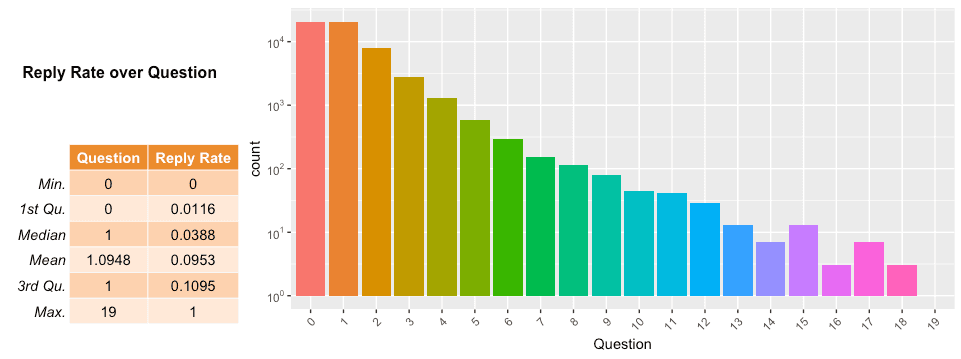
Respondents tend to answer only one question regardless of how many you ask, so save yourself time and stick to one question.
Tip: For Yesware users, our Response Insights feature will help you craft the perfect message by analyzing your email and providing feedback based on the most effective subject length, word count, question count, and readability.
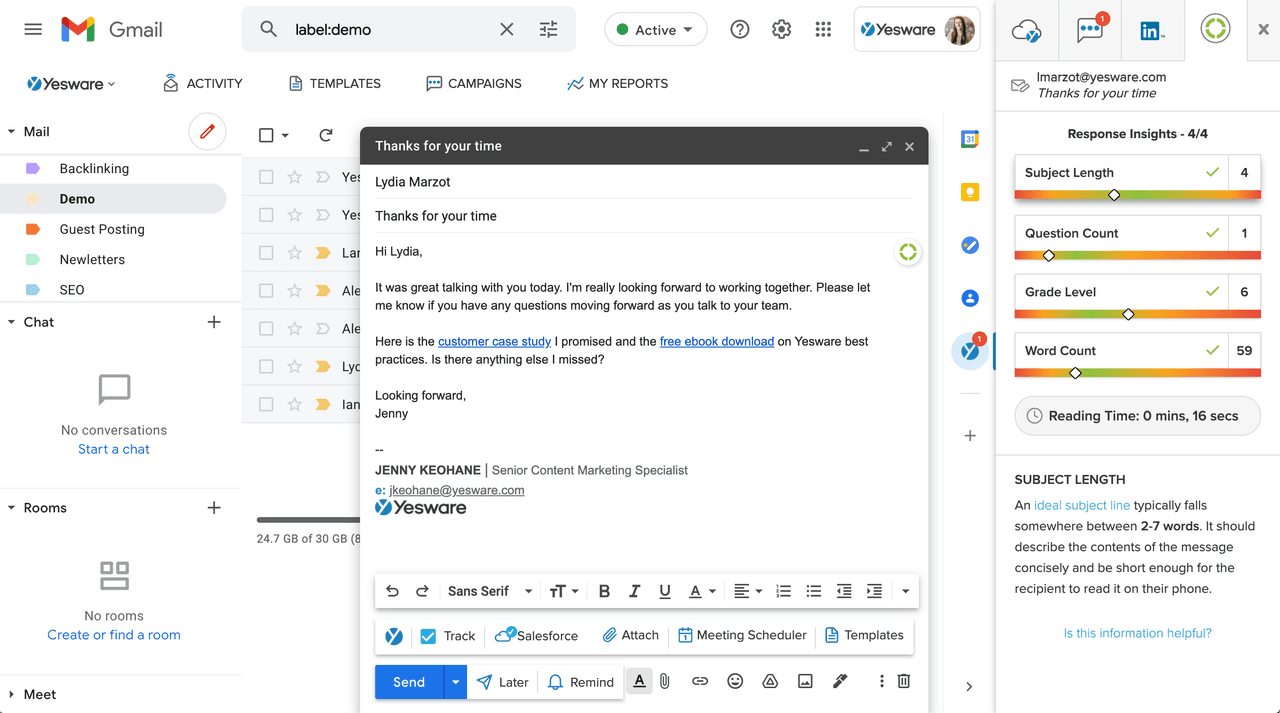
10. Be Careful With Your Tone
Listening to someone speak in person vs. reading words on a screen can come off very different.
When sending professional emails — try to avoid sarcasm or irony. This can lead to misinterpretation and coming off as non-professional. When it comes to dry humor, save it for in-person communication when the recipient can physically hear your tone of voice or view your facial expressions.
Punctuation goes along with this. For example, you could use multiple exclamation points or caps because you’re excited and enthusiastic, but the recipient can easily read this as yelling or coming off as too pushy.
When it comes to the tone of your message — play it safe. Find the right balance between formal and friendly.
11. Always Proofread
It’s a good rule of thumb to always proofread your message before sending it. Grammar errors are a bad look, especially to someone you don’t know.
If you’re someone who moves fast and writes numerous emails a day, getting a tool like Grammarly can help to catch quick errors on the fly.
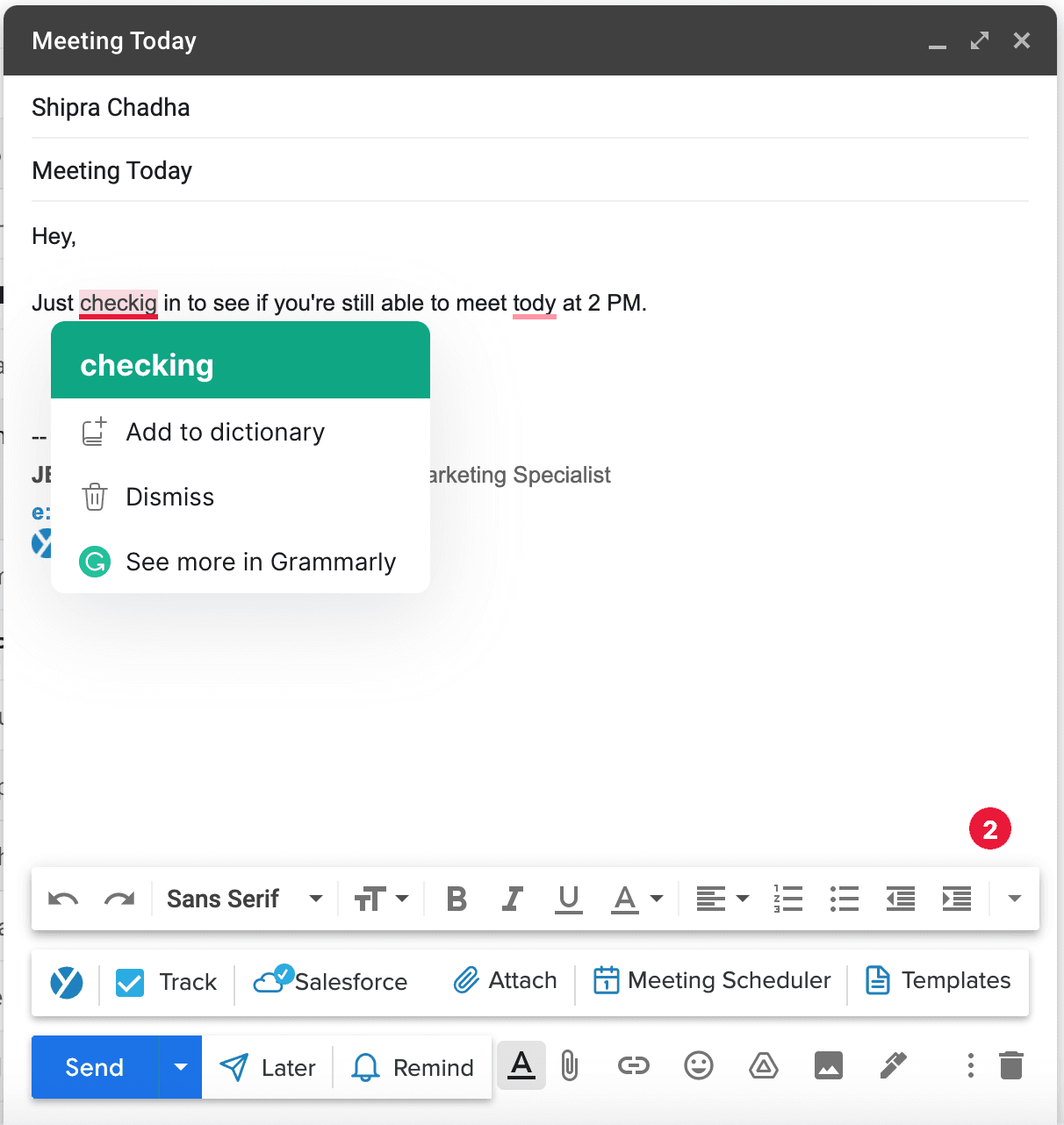
Grammarly provides an immediate spell check as you type. So it’ll point out any errors before you can click send.
Conclusion
As stated above, email mistakes are inevitable. But practicing your email etiquette and keeping some of these tips top-of-mind can go a long way.
You should always proofread your emails. Whether that be first-time emails, follow-ups, or ongoing threads, they’re all equally important.
Once you instill email etiquette into your everyday emailing, if you get no reply, at least you know it’s not because of a small email error or mistake.
Get sales tips and strategies delivered straight to your inbox.
Yesware will help you generate more sales right from your inbox. Try our Outlook add-on or Gmail Chrome extension for free, forever!
Related Articles
Jenny Keohane
Jenny Keohane
Melissa Williams
Sales, deal management, and communication tips for your inbox
